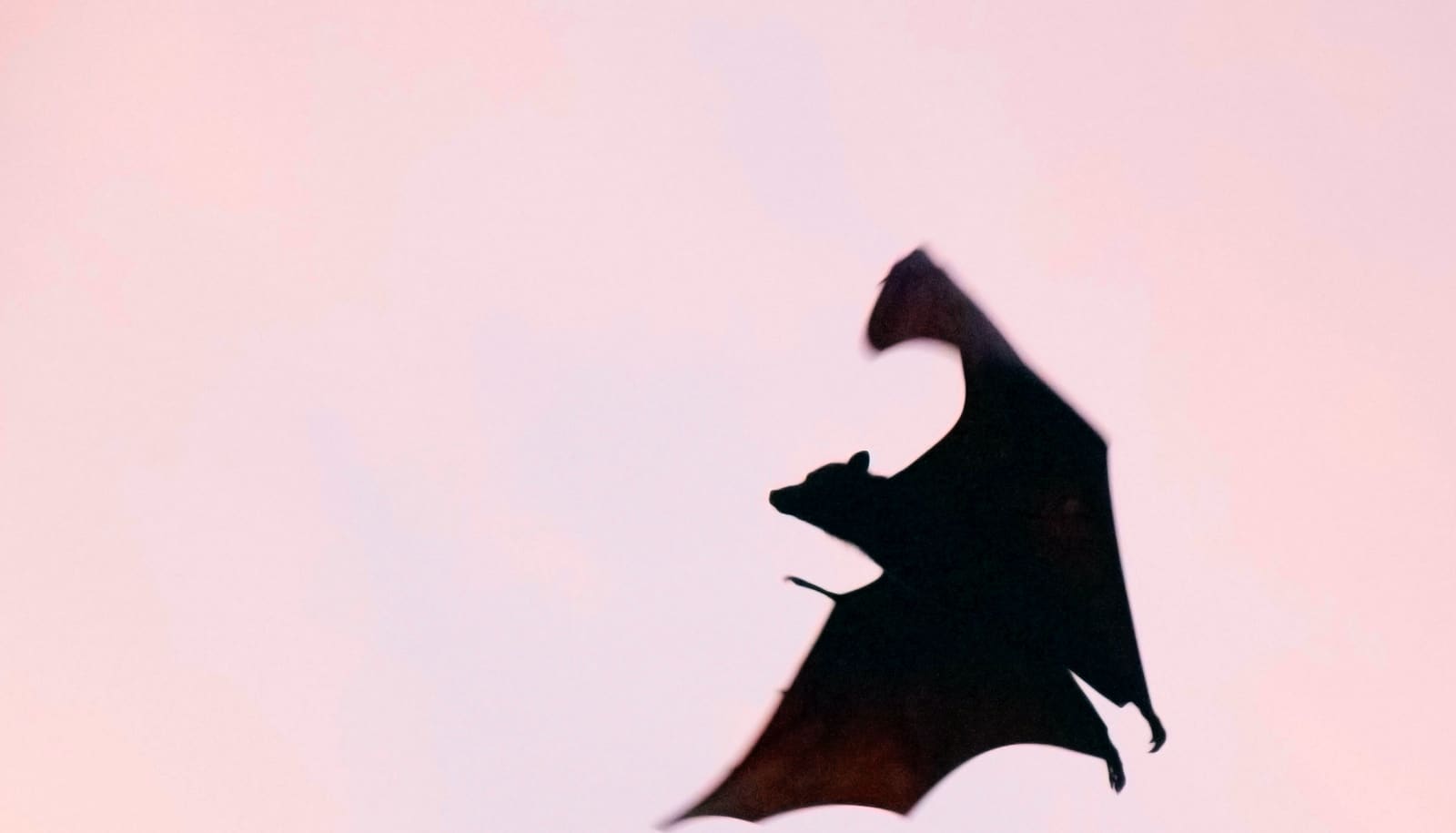Researchers can now study the brain of a bat in flight, recording for the first time how a roving animal’s neurons fire as it shifts attention to the next obstacle in its path.
The new wireless technology let scientists see what happens in the brains of animals as they behave naturally, uninhibited by laboratory constraints. Because bats share the same basic brain structure as all mammals, including humans, the achievement clarifies what happens in the brain as we move through the world.
“If you want to understand how the brain operates in the real world, you have to have the animal moving through the world in a natural way,” says Melville Wohlgemuth, a postdoctoral fellow at Johns Hopkins University and coauthor of the study in eLife.
“This idea of recording the brain without wires is brand new. And no one has used it to understand how an animal senses the world and reacts to that information.”
To study a bat as it flew, the team first needed a wireless recording device that wouldn’t weigh down an animal that itself weighs less than an ounce.
It took about a year to develop the device, with the help of an outside engineering firm, and then another year of trial and error to perfect it. The team also equipped a “flight room” with high-speed cameras and an array of microphones to pick up a bat’s chirps, the echolocation calls it emits as it flies.
The technology simply didn’t exist a quarter-century ago when Cynthia Moss, a professor of psychological and brain sciences at Johns Hopkins, first dreamed of studying a bat as it flew.
“Twenty-five years ago, I was talking with a colleague about recording neural activity from a free-flying bat, and he looked at me like I had two heads.”
Until now, researchers have been limited to observing the brains of stationary animals engaged in simple and often contrived behaviors—like watching a pixel on a computer screen. They could learn from the brain of an immobile bat, but an artificial circumstance can only reveal so much about how the brain behaves in a real-world situation.
And in the real world, what bats and other animals typically do is move.
“Twenty-five years ago, I was talking with a colleague about recording neural activity from a free-flying bat, and he looked at me like I had two heads,” Moss says. “It has taken a lot of effort and advancement in technology to make this possible.”
The team is among the first in the world to wirelessly record brain activity, and the first to do it as an animal moved through space, shifting its attention from object to object. Bats’ high-frequency chirps bounce off nearby objects; they listen to the echoes to “see” where the objects are in the environment.
The team was ultimately able to combine data about a bat’s location, the time of its vocalizations, and the bat’s brain activity to determine which objects caused neurons to fire and, therefore, what the bat was paying attention to.
Quick peeks let lovebirds maneuver in flight
As a bat focused on objects, the researchers observed bursts of activity in certain midbrain cells—something that would likely happen when any animal, including humans, shifts attention.
“We can see how the moving animal interacts with objects, just like a person would walking in the woods,” Wohlgemuth says.
Finally observing brain activity in a free-moving animal was monumental for the scientist, who see great potential in the technique for future studies.
See how bats trade senses to hunt a robot frog
“To see signals in the brain when an animal is really looking at something and then to see a neuron fire, was the holy grail for me,” says coauthor and graduate student Ninad Kothari. “As this research goes forward, we can take the information we get from animals like bats, mice, and owls and put it into human terms to potentially help people with attention deficits.”
The National Science Foundation, Air Force Office of Scientific Research, and the Office of Naval Research supported the study.
Source: Johns Hopkins University



